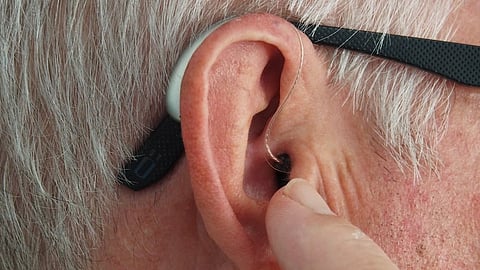According to the World Health Organization, the number of people living with hearing loss is set to reach 2.5 billion by 2050. Hearing loss has been linked to decreased quality of life, cognitive decline, and depression, and a growing body of evidence suggests an association between hearing loss in older adults and neurocognitive disorders, such as dementia. Additionally, a person’s hearing loss can also have an impact on those close to them, including family and friends.
In New York, most adults do not have their hearing assessed as part of regular health check-ups. When patients do have hearing tests—which measure hearing loss in decibels—a level above 60 dB HL indicates severe hearing loss. However, among those who receive this result, few are referred to a hearing specialist to assess whether cochlear implants could be the most beneficial treatment option. Despite the potential benefits of cochlear implants, less than 1 in 10 eligible adults will receive one in their lifetime.


